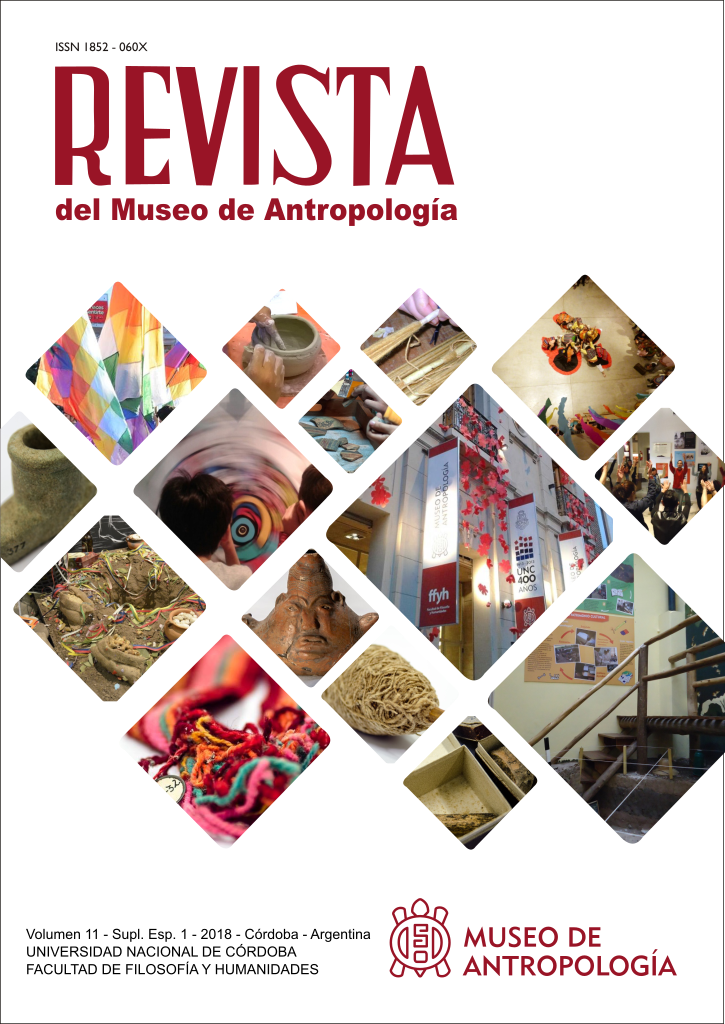How Narrator and Language Structure Myth: Interferences in “The Jaguar and Tamanduá, a Bakairi Tale
DOI:
https://doi.org/10.31048/1852.4826.v11.n0.21457Keywords:
myth, language, structural analysis, storyteller, karibAbstract
The paper aims to revisit the structural analysis proposal developed by Levi-Strauss based on the a Linguistics model, however not excluding the native languages and the narrators of myths as key components to find out system units, called cosmoemas in this article. The cosmoemas covered here are the result of comparison between two versions of the story Udodo Pajika, told by Bakairi, a Karib South people, in order to focus on how the compound language, narratorand logic of the myth give the broadest sense of narratives which must be worth anthropologist interested in native process of story-telling.Downloads
References
Abreu, C.1895. Os Bacaerys. Revista Brasileira, Ano 1, Tomos III e IV.
Bonfim, E. 2015. A Pessoa Inclusiva em Bakairi. Morfologia Pronominal e Ontologia em Línguas Karib”. Espaço Ameríndio, v.9, n.1, pp.35-53.
Ducrot, O. 1987. O Dizer e o Dito. São Paulo, Pontes. Gow, P. 2014. Mito e Mitopoiesis. Cadernos de Campo, n. 23, p. 187-210.
Kroeber, A. L.1909. “Classificatory systems of relationship”. Journal of the Royal Anthropological Institute Vol. 39 pp:77–84.
Lévi-Strauss, C. 1996. História de Lince. São Paulo: Cia. das Letras.
Lévi-Strauss, C. 2008 [1958a]. A Estrutura dos Mitos. In: Antropologia Estrutural I. São Paulo: Cosac & Naify.
Lévi-Strauss, C. 2008 [1958b]. A Análise Estrutural em Linguística e Antropologia. In: Antropologia Estrutural I. São Paulo: Cosac & Naify.
Lévi-Strauss, C. 2011 [1971]. O Homem Nu. São Paulo: Cosac & Naify.
Meira, S. 2005. Reconstructing Pre-Bakairi Segmental Phonology. Anthropological Linguistics, v. 47, n. 3, p. 261-291.
Meira, S. e Franchetto, B. 2005. The southern Cariban languages and the Cariban family. International Journal of American Linguistics, v.71, p. 127-192.
Quintino, W. P. 2012. “Aspectos da fonologia Xavante e questões relacionadas: rinoglotofilia e nasalidade”. Rio de Janeiro - UFRJ. Tese (Doutorado em Linguística).
Souza, T. C. 1991. Perspectivas de Análise do Discurso em uma língua indígena: o Bakairi (Carib). Orlandi, Eni. Discurso Indígena. A Materialidade da Língua e o Movimento da Identidade. Campinas: Unicamp.
Souza, T. C. 1994. Discurso e Oralidade. Um Estudo em Língua Indígena. Tese de Doutorado apresentada ao Programa de Pós-Graduação em Linguística do Instituto de Estudos da Linguagem, Universidade Estadual de Campinas.
Souza, T. C. 1995. O Traço Sonoro em Bakairi. Wetzels, L. Estudos Fonológicos das Línguas Indígenas Brasileiras. Rio de Janeiro: Editora da UFRJ, pp. 29-52.
Souza, T. C. 1999. Discurso e Oralidade: um Estudo em Língua Indígena. Niterói: publicações do MCII/UFF. Souza, T. C. 2006. “Alguns aspectos da ergatividade em Bakairi”. Estudos da língua(gem). Vol.4, nº 2, pp. 137-152.
Souza, T. C. 2008. “Mito e discursividade: um processo metonímico”. Revista Boitatá, nº 6, pp. 23-34.
Viveiros de Castro, E. 1996. “Os pronomes cosmológicos e o perspectivismo ameríndio”. Mana. Estudos de Antropologia Social 2(2): 115-143.
Von den Steine, K.1892. Die Bakairi-Sprachen. Leipzig.
Wetzels, L.1997. Bakairi and the feature voice. Boletim da ABRALIN (20).
Downloads
Published
Issue
Section
License
Those authors who have publications with this Journalaccept the following terms:
a. Authors will retain their copyrights and guarantee the journal the right of first publication of their work, which will be simultaneously subject to the Creative Commons Attribution License (Licencia de reconocimiento de Creative Commons) that allows third parties to share the work as long as its author and his first publication in this journal.
b. Authors may adopt other non-exclusive licensing agreements for the distribution of the version of the published work (eg, deposit it in an institutional electronic file or publish it in a monographic volume) provided that the initial publication in this journal is indicated.
c. Authors are allowed and recommended to disseminate their work on the Internet (eg in institutional telematic archives or on their website) before and during the submission process, which can lead to interesting exchanges and increase citations of the published work. (See The Effect of Open Access - El efecto del acceso abierto)












